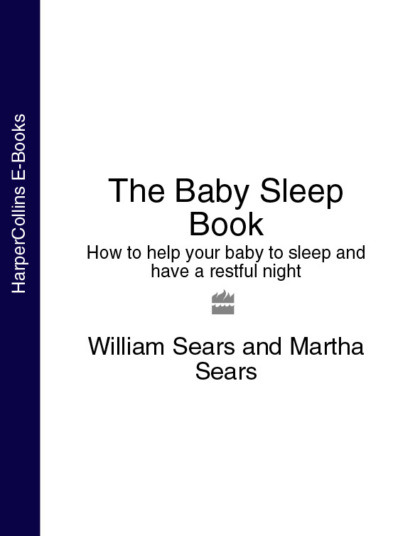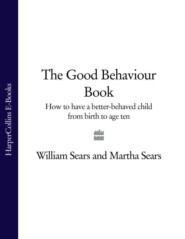По всем вопросам обращайтесь на: info@litportal.ru
(©) 2003-2024.
✖
The Baby Sleep Book: How to help your baby to sleep and have a restful night
Автор
Год написания книги
2018
Настройки чтения
Размер шрифта
Высота строк
Поля
Fill tiny tummies. The tinier the tummy, the more frequently babies need to be fed – both day and night. Babies have tiny tummies – about the size of their fist – which is why babies under six months of age need one or two night feedings. Some babies (especially breastfed) continue to need night feedings even in the second six months of life. You can maximize the amount of time baby will sleep after a feeding by being sure that baby fills his tummy as he feeds off to sleep and again when you feed him in the middle of the night. (See “Night Feedings (#litres_trial_promo)”, pages for how to comfortably fill tiny tummies for longer sleep.)
Swaddle your baby. Swaddling recreates the womb environment. In the early months, many babies like to “sleep tight”, securely swaddled in a cotton baby blanket. Older infants like to sleep “loose”, and may sleep longer stretches with loose coverings that allow them more freedom of movement. Often, dressing a baby loosely during the day, but swaddling him at night, conditions the baby to associate sleep with swaddling. Make sure baby doesn’t get too warm.
Once I started swaddling her, she slept through the night. At about three months she got too strong to swaddle in the traditional way. She would get her arms out and rub her face and startle herself awake. I took a larger thin blanket and wrapped the sides individually over each arm and under her back so she couldn’t get loose. It may sound cruel, but she smiles as I do it and nods off peacefully all night long.
Babies usually start squirming out of the swaddling wraps by six months. Another possible problem with swaddling is that once babies get used to it, they have a hard time sleeping without being swaddled. The movement of their arms and legs wakes them up.
caution about over swaddling
Dr Robert Salter, Professor of Orthopedics at the largest children’s hospital in the world, the Hospital for Sick Children in Toronto, Canada, literally wrote the book on infant hip development. He wrote me a long letter after the publication of the first edition of The Baby Book, in which we extolled the merits of swaddling and showed parents how to swaddle a baby. He believes leaving babies swaddled too long, especially in the early months, can interfere with the development of the ball-and-socket hip joint. For this reason, we recommend parents only swaddle babies during sleep time. Give baby plenty of time to “let loose” when awake.
step 4: create a variety of bedtime rituals (#ulink_06cfd802-05b5-5572-bc02-0c5787981dae)
You are learning where baby sleeps, when baby sleeps, and how to create a comfortable sleepy environment, and now we come to the next step in our plan: helping you work out what bedtime rituals work best for your baby. As you use these same routines night after night (or alternate through several routines consistently) baby will learn to fall asleep easily and stay asleep longer.
Creating healthy and relaxing sleep associations
A sleep “association” is not a naptime playgroup or a group of sleepy parents who gather to yawn and complain about their baby’s sleep habits. A sleep association refers to a connection in baby’s mind between falling asleep and the various activities, places, experiences, and feelings that precede his nodding off into slumber. The wiring in baby’s brain is full of patterns of association. For example, if you usually feed and sing your baby to sleep in a rocking chair, this setting will become programmed into your baby’s mind as a sleep-inducing routine. He will remember the calm and drowsy feelings he gets from rocking and feeding, and this will help him fall asleep.
What kind of sleep associations do you want to teach your baby? Do you want to create attachment-based sleep associations or independence-based sleep associations?
Attachment-based sleep associations. Many parents like to “parent” their babies to sleep; rocking, feeding, or snuggling while baby drifts off to sleep. Baby learns to associate falling asleep with a parent’s presence. The advantage? Closer bond between parent and baby. The disadvantage? Mum or Dad must be involved with baby falling asleep for months or years. Depending on your own instinctive parenting style, you may actually view this as an advantage; certainly your baby would.
Independence-based sleep associations. Other parents strive to help baby learn a more independent way of falling asleep, without the need for parent involvement. The most popular method for learning to fall asleep independently is the cry it out method. The disadvantage? You don’t teach baby to fall asleep, you force him to. Medical research has shown that excessive crying creates stress for a baby. So a baby learns to associate falling asleep with fear, stress, and worry. This is not healthy in the long run.
(We will discuss sleep anxiety more on page (#litres_trial_promo) and the harmful effects of crying it out on page (#litres_trial_promo).) We all want our babies to eventually learn to fall asleep independently by their own self-soothing strategies at an appropriate age. Our sleep plan teaches them how, rather than forcing them to sleep independently.
As parents ourselves, we chose to create attachment-based sleep associations in our kids. But we know that not all parents will make the same choice. Is there a middle ground? Is there a way to help a baby learn to fall asleep independently but without excessive crying or stress? Is there a way to create attachment-based sleep associations that meet baby’s need and at the same time aren’t overly demanding on parents? We believe the answer to these questions is YES!
Why is it necessary for you to help your baby develop healthy sleep associations? Why not just put baby down in her cot, walk out of the room, and let her fall asleep on her own? Won’t she learn that being in the cot means there’s nothing to do now but sleep? Well, yes, she will begin to associate being left alone in the cot with sleep. Her developing brain is busy building patterns of association all the time. That’s what brains do. But in the early months, babies do not have the developmental capacity to transition themselves from the state of being awake to being asleep without help. A tiny baby left alone in her cot to fall asleep on her own is likely to cry fearfully and then sleep anxiously. Going to sleep anxiously defeats one of the goals of your sleep plan: to teach baby a healthy attitude about sleep; that sleep is a pleasant state to enter and a happy state to remain in.
Babies need to be parented to sleep so that they can form pleasant sleep associations. So what kind of activities, experiences, and feelings do you want your baby to associate with going to sleep? Babies who fall asleep while breast- or bottle-feeding will learn to associate warm milk, rhythmic sucking, and being cuddled close to Mum with sleep. Babies who are carried around or rocked to sleep will learn that motion and comfort, as well as contact with Mum or Dad, are what send them into dreamland. Babies who are put in a cot to cry themselves to sleep learn that sleep is a lonely time when they need to comfort themselves.
Remember, you not only want your baby to sleep longer, but to sleep happier. So, in considering any advice about sleep, including the advice in this book, ask yourself:
“If I were my baby, how would I want to go to sleep?”
Getting behind the eyes of your baby and imagining how you would want your parents to act in a certain situation is one of the most important parenting tools we have learned over our years as parents and pediatricians. You will nearly always make wise decisions about how to parent your children if you begin your decision process by trying to understand the situation from your child’s point of view. If you were a baby, would you rather be parented to sleep at the breast of mother or in the arms of father, or just put down in a lonely cot and left to cry off to sleep?
We are now going to show you ways to create sleep associations that have one goal in mind – to help baby learn that sleep is a pleasant state to enter and a happy state to remain in.
Primary and secondary sleep associations
Another concept we want you to understand is primary and secondary sleep associations. Think of your baby’s primary sleep association as whatever usually turns on the sleep switch.
and the sleep association winners are:
Primary
Feeding to sleep (breast or bottle)
Rocking
Wearing down in a sling
Falling asleep independently
Secondary
Soft music
Singing lullabies
Dimmed light
White noise
Dummy or “cuddly”
Patting
Being walked
Stroking (massage)
Swinging
Dancing in arms
Scent of mother
Verbal sleep cues (i.e. “nighty, night” …)
Stories
A combination of several
Secondary associations are things such as soft music, dim lights, or stories that may help to calm a child and prepare her for sleep. Some parents will choose one primary sleep association as the foundation, and use several secondary associations to help. Others like to get baby used to several different primary associations for sleep so that they have more options for bedtime.
Choosing sleep associations that fit your baby best
Which primary sleep association is going to work best for your baby? You won’t know until you’ve tried them all. We suggest you go through a trial period of a few weeks to see what primary method of putting baby to sleep works the best. Try feeding baby to sleep a few nights, then try rocking or walking. Try snuggling with baby but not feeding to sleep. Involve Dad in the routine as well. Try a variety of methods until you learn what works best. Here are the main primary associations to consider as you decide what will work best in your family: feeding baby to sleep, feeding baby almost to sleep, lulling baby to sleep without feeding, and laying baby down to fall asleep independently.
1. Breastfeeding or bottle-feeding your baby to sleep. Breastfeeding mums often find the easiest way to get their baby to sleep is by breastfeeding. In fact, in the first few weeks it is almost impossible to keep a baby awake at the breast for more than ten minutes. Baby is inevitably going to fall asleep feeding. Young babies also fall asleep very easily while bottle-feeding. Breastfeeding seems to be nature’s plan for comforting babies and helping them fall asleep. In fact, breast milk contains a sleep-inducing protein that helps lull baby into dreamland. As baby relaxes, so does mother, thanks to the hormones released when baby sucks at the breast.
We recommend that you not place any limitations on your baby feeding to sleep during the early weeks of breastfeeding. In the first four to six weeks after birth, you are learning to read your baby’s hunger cues, your baby is learning to tell you when he is hungry, and your milk supply is adjusting to baby’s needs. Relax and enjoy the breastfeeding experience.
A smart baby will get to love this feeding-to-sleep association and come to enjoy and expect it for as long as you breastfeed or use bottles. On the one hand, this means that you will be able to count on feeding as an easy way to get baby off to sleep. Even a baby who is fighting sleep will eventually succumb to the relaxing feelings that come from feeding. On the other hand, Mum’s breasts have to be there at bedtime, and again, when baby awakens in the middle of the night. Even if breastfeeding is your baby’s number one primary sleep association, you may want to help him learn other associations so you have other ways to put him to bed.







